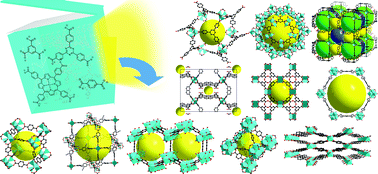Tuning the structure and function of metal–organic frameworks via linker design
Abstract
Metal–organic frameworks (MOFs) are constructed from metal ions/clusters coordinated by organic linkers (or bridging-ligands). The hallmark of MOFs is their permanent porosity, which is frequently found in MOFs constructed from metal-clusters. These clusters are often formed in situ, whereas the linkers are generally pre-formed. The geometry and connectivity of a linker dictate the structure of the resulting MOF. Adjustments of linker geometry, length, ratio, and functional-group can tune the size, shape, and internal surface property of a MOF for a targeted application. In this critical review, we highlight advances in MOF synthesis focusing on linker design. Examples of building MOFs to reach unique properties, such as unprecedented surface area, pore aperture, molecular recognition, stability, and catalysis, through linker design are described. Further search for application-oriented MOFs through judicious selection of metal clusters and organic linkers is desirable. In this review, linkers are categorized as ditopic (Section 1), tritopic (Section 2), tetratopic (Section 3), hexatopic (Section 4), octatopic (Section 5), mixed (Section 6), desymmetrized (Section 7), metallo (Section 8), and N-heterocyclic linkers (Section 9).

- This article is part of the themed collection: Metal Organic Frameworks (MOFs)

 Please wait while we load your content...
Please wait while we load your content...